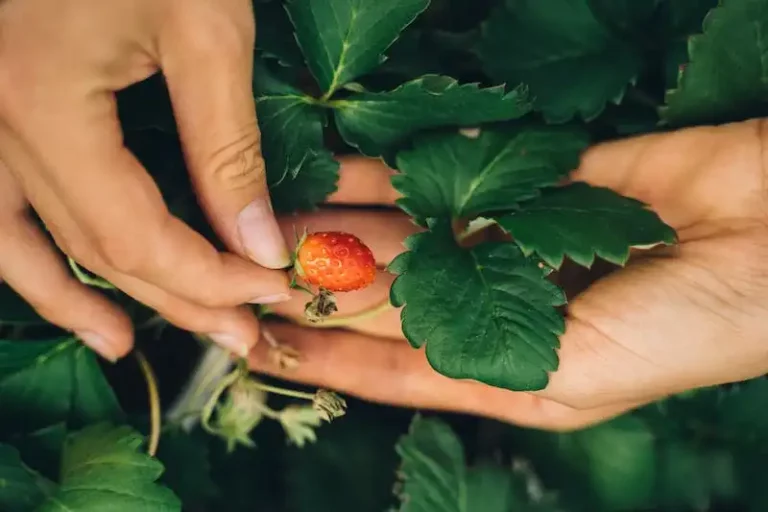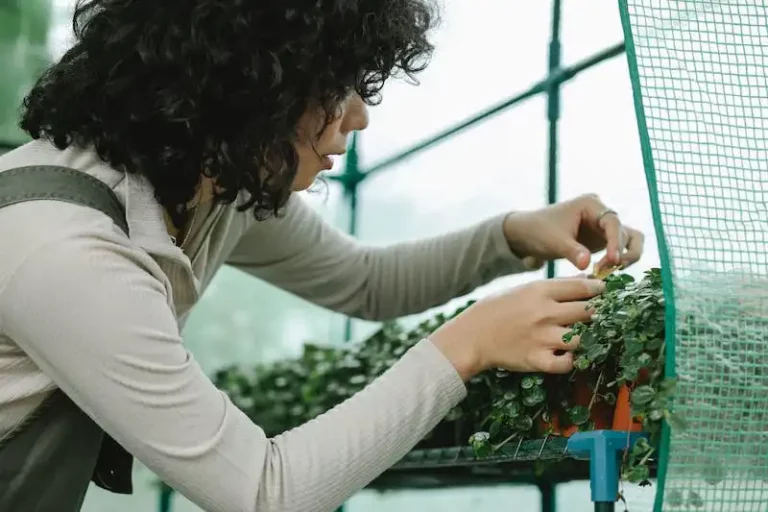Saxifraga stolonifera, also known as creeping saxifrage or strawberry saxifrage, is a popular plant in gardening and landscaping due to its distinctive features and versatility. It is a perennial plant that starts growing from stolons, which are horizontal stems that spread out above the ground. These stolons give the plant its unique creeping habit, making it an excellent choice for ground cover in shady areas.
One of the notable characteristics of Saxifraga stolonifera is its attractive foliage. The leaves are heart-shaped and have a deep green color. The plant produces delicate white flowers with five petals, which resemble tiny strawberries. Because of its strawberry-like appearance, Saxifraga stolonifera has earned the local names of creeping saxifrage or strawberry saxifrage.
When it comes to care, Saxifraga stolonifera prefers well-drained soils and partial shade. It can tolerate a wide range of light conditions, but direct sunlight should be avoided as it can scorch the leaves. Regular watering is crucial, especially during the growing season, but care should be taken not to overwater the plant. Saxifraga stolonifera is also susceptible to diseases and pests, so proper maintenance and vigilance are necessary.
Propagation of Saxifraga stolonifera can be done through the division of stolons or through seeds. It is best to propagate the plant in early spring or early fall when the plant is not actively growing or flowering. Saxifraga stolonifera can be grown in pots or directly in the ground, but it is essential to ensure that the soil is well-draining and rich in organic matter.
Overall, Saxifraga stolonifera is a versatile and attractive plant that can add beauty and elegance to any garden or landscape. Whether used as ground cover or in containers, the unique characteristics and charming foliage of Saxifraga stolonifera make it a standout choice for plant enthusiasts and gardening enthusiasts alike.
Saxifraga stolonifera “Strawberry Begonia”
Saxifraga stolonifera, also known as “Strawberry Begonia” or “Creeping Saxifrage,” is a beautiful plant that is native to Japan and other parts of Asia. The plant gets its common name “Strawberry Begonia” from its strawberry-like flowers and begonia-like foliage.
This plant always grabs attention with its attractive characteristics. The leaves are round and toothed, and they have a textured surface that gives them a unique and interesting appearance. The leaves are also slightly hairy and can range in color from green to purple. They are typically best grown in shady areas as direct sunlight can scorch their delicate foliage.
Saxifraga stolonifera is a relatively small plant, usually reaching a height of about 6 inches. It spreads by sending out stolons, or runners, which root into the ground and produce additional plants. This creeping habit makes it an excellent ground cover in shady areas.
When it comes to planting, it is important to choose the right soil for your Saxifraga stolonifera. These plants prefer well-draining soils that are rich in organic matter. They also prefer high humidity and thrive in temperatures between 60°F and 75°F.
Watering is another important aspect of caring for Saxifraga stolonifera. The plant requires consistent moisture, but it is also essential to avoid overwatering as this can lead to root rot. It is best to let the soil dry slightly between waterings.
Like many plants, Saxifraga stolonifera may be susceptible to pests and diseases. Common pests that can affect this plant include aphids, mealybugs, and spider mites. It is essential to monitor your plant regularly and take appropriate action if pests are spotted.
Propagation of Saxifraga stolonifera can be done through stem cuttings or by dividing the plant. Stem cuttings should be taken in the spring or early summer. They can be rooted in water or directly in a pot with a well-draining soil mix.
Pruning is not necessary for Saxifraga stolonifera, but it can help maintain the plant’s shape and encourage new growth. It is best to prune after the plant has finished flowering or during its period of resting in the winter.
It is important to note that Saxifraga stolonifera is toxic to cats and dogs if ingested. It contains calcium oxalate crystals that can cause mouth and throat irritation. Therefore, it is essential to keep the plant away from pets and children.
Overall, Saxifraga stolonifera “Strawberry Begonia” is a lovely plant that adds a touch of beauty to any garden or indoor space. Its creeping habit, unique foliage, and charming strawberry-like flowers make it a popular choice among plant enthusiasts.
For additional care information and answers to frequently asked questions about Saxifraga stolonifera, consult a local nursery or refer to the USDA Plant Hardiness Zone information.
Sources:
“Strawberry Begonia: A Perfect Creation of Nature” by NC State Extension (licensed under CC BY-NC-ND 2.0)
“Houseplants: Strawberry Begonia” by University of Florida IFAS Extension (licensed under CC BY-NC-ND 2.0)
Saxifraga stolonifera
Saxifraga stolonifera, also known as creeping saxifrage or strawberry begonia, is a popular plant with beautiful foliage and delicate flowers. It is native to Japan and Korea but is now grown all over the world.
One of the best characteristics of Saxifraga stolonifera is its ability to grow in indirect sunlight, making it an excellent choice for indoor gardens or shaded areas in gardens. It can also tolerate a wide range of temperatures, making it suitable for different climate zones.
In terms of care, Saxifraga stolonifera is relatively easy to grow. It requires well-draining soil and regular watering. It is important to avoid overwatering the plant, as this can lead to root rot. Fertilizing the plant with a balanced, water-soluble fertilizer in early spring and early fall will help promote healthy growth.
The plant can be propagated by stolons, which are slender stems that grow horizontally along the ground. These stolons produce roots and new plants where they come into contact with the soil. To propagate the plant, simply cut a piece of the stolon with a few leaves and plant it in a pot or directly in the ground.
Saxifraga stolonifera is generally resistant to diseases and pests, but it is always a good idea to keep an eye out for common plant pests like aphids or spider mites. If any pests are detected, they can be treated with insecticidal soap or a homemade solution of mild dish soap and water.
The plant has a somewhat resting period during the winter months, where growth slows down. During this time, the plant may lose some of its leaves, but they will grow back when the plant enters its next flowering period.
While Saxifraga stolonifera is not considered poisonous to humans, it is toxic to pets, so it is important to keep it out of reach of cats and dogs.
For additional information and frequently asked questions about Saxifraga stolonifera, there are many online resources and gardening forums that provide detailed care instructions and growing tips.
In short, Saxifraga stolonifera is a beautiful and low-maintenance plant that can be grown both indoors and outdoors. With its attractive foliage and delicate flowers, it adds a touch of elegance to any garden or indoor space.
Strawberry Begonia Saxifraga stolonifera
The Saxifraga stolonifera, commonly known as Strawberry Begonia or Creeping Saxifrage, is a perennial plant that belongs to the saxifrage family. Despite its common name, the Strawberry Begonia is not a true begonia. It gets its name due to its similar appearance to begonias, having delicate, heart-shaped leaves.
The plant is native to East Asia, specifically Japan, and can be found growing in mossy forests and rocky habitats. It is a creeping plant, spreading through stolons or runners, which are vine-like stems that move along the ground and produce new plants at each node. This characteristic allows the Strawberry Begonia to form dense mats of foliage.
Strawberry Begonia Saxifraga stolonifera is a great choice for indoor gardening, as it is relatively easy to care for and maintain. It prefers bright, indirect sunlight and high humidity levels. It is important to keep the soil consistently moist but not soggy, allowing the top inch of soil to dry out between waterings.
When it comes to soil, the Strawberry Begonia prefers well-draining soil that is rich in organic matter. A potting mix formulated for houseplants or a mixture of peat moss, perlite, and compost works well. The plant can also be grown directly in water, known as hydroponics, as long as the roots are submerged.
During the growing season, the plant produces small white or pink flowers that resemble strawberry flowers, hence the name Strawberry Begonia. These flowers have five petals and appear in clusters at the end of delicate stalks. However, it is more commonly grown for its attractive foliage rather than its flowers.
Strawberry Begonia requires regular fertilization, especially during the growing season, to promote healthy growth. A balanced, water-soluble fertilizer can be applied once a month at half the recommended strength. It is essential to follow the manufacturer’s instructions for proper dilution and application.
Like many plants, the Strawberry Begonia is susceptible to pests and diseases. Common pests that can affect the plant include aphids, spider mites, and mealybugs. Regularly inspecting the plant and treating any pest infestations promptly is crucial to prevent further damage.
In terms of toxicology, the Strawberry Begonia is non-toxic to humans and most pets. However, it is best to keep it out of reach from curious pets or small children who may be tempted to chew on the leaves.
Strawberry Begonia Saxifraga stolonifera is a versatile and attractive plant that can be enjoyed both indoors and outdoors. It is suitable for USDA hardiness zones 6 to 10, making it adaptable to various climates. Before planting outdoors, it is advised to check the local climate and microclimate conditions to ensure it can thrive in your area.
In conclusion, the Strawberry Begonia Saxifraga stolonifera, or Creeping Saxifrage, is a charming plant known for its beautiful foliage and delicate flowers. With proper care and attention, it can thrive in various environments and become an excellent addition to any home or garden.




